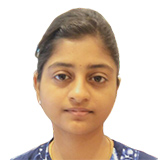Scattering-Assisted Localization Microscopy (SALM) is a super-resolution microscopy tool where high resolution is obtained based on the size of the grain in the speckle pattern on the sample.
Limitations of the Other Super-Resolution Tools
The resolution of an image is limited by its diffraction. According to the criteria established by Abbe and Rayleigh, the spatial resolution can be increased by increasing the solid angles of illumination and collection. The super-resolution microscopes exceed the limit of resolution offered by conventional microscopes.
The super-resolution microscopes currently in use, including Structured Illumination, Stimulated Emission Depletion and Photoactivated Location Microscopy, achieve this by modulating the size of the emitted particles. However, the methods based on light collection require a lens with a high numerical aperture and short working distance (less than 1 mm).
Wavefront Shaping
Light scattering is an important cause of deformation of the shape of the light wavefront which makes the light rays less coherent. Wavefront shaping is a method recently employed which focuses the light into coherent light beams. In Scattering-Assisted Localization Microscopy (SALM), wavefront shaping is employed to increase the resolution of the image. Wavefront shaping in SALM is achieved using two methods: spatial light modulators and digital micromirror devices.
Spatial Light Modulators
Spatial light modulators (SLMs) are tools to modulate the intensity and phase of light. SLMs can produce phase changes over a range. The SLMs consist of photosensors which sense the pixel brightness, and then liquid crystals are used to replicate the image.

Digital Micromirror Devices
This is a class of microelectromechanical device which consists of millions of tiny switchable mirrors. The position of the mirrors can be changed through a range of +12° or -12°. The light ray is directed on to this micromirror device, and then the mirrors may be switched to change the phase of the incident ray converting it into greater or less degrees of coherence.
The Principle of SALM
In this technique, wavefront shaping methods, including the use of spatial light modulators or digital micromirror devices are employed. The DMD is divided to 11 X 11 square segments where the size of each side is 70 µm.
The laser beam falls on a specific or an active area of the DMD. Subsequently, one segment is flipped or switched and the pixel intensity is measured. This switch is accepted if the light intensity increases.
Using this technique, the incident light is focused on a single grain which shows a disorganized speckle pattern. These are called ‘enhanced speckle grains’ because of their greater coherence. The size of the enhanced speckle grain does not depend on how the light is collected or the illumination.
Advantages of SALM
Increased Resolution
This method can increase the resolution of the final image up to four-fold when compared to imaging with a conventional lens in semitransparent and turbid imaging samples. A resolution of 312 nm was observed when two fluorescent beads of 0.5 µm were imaged on a titanium dioxide layer using a NA of 0.2.
Independent of Numerical Aperture
Super-resolution methods usually require the use of a lens with a high numerical aperture. However, SALM is independent of the numerical aperture as it is based on wavefront shaping to reduce the scattering.
Maximizing Fluorescence
The wavefront shaping methods lead to maximum fluorescence intensity. The fluorescent signal that is excited by the optimized grain speckle is localized by fitting the point spread function.
Longer Working Distance
A high resolution image with a working distance of 25 mm can be generated using SALM. This is in contrast to other super-resolution methods which require a working distance of <10 mm. Samples which are sensitive and can be damaged easily can benefit from this system as the larger working distance can prevent damage to the sample from the lens.
Conclusions
SALM can be a powerful super-resolution tool which does not require high NA or large working distances. This technique can also provide high resolution images in turbid or low damage threshold samples.
Reviewed by Liji Thomas, MD
Sources
- Scattering-assisted localization microscopy (https://arxiv.org/pdf/1804.01511.pdf)
- Tailoring light with a digital micromirror device (https://onlinelibrary.wiley.com/doi/pdf/10.1002/andp.201500111)
- A tutorial on wavefront shaping with spatial light modulators for advanced microscopy (http://www.focusonmicroscopy.org/2013/PDF/534_RitschMarte.pdf)
Further Reading
- All Microscopy Content
- Advances in Fluorescence Microscopy
- Applications in Light Microscopy
- Electron Microscopy: An Overview
- Brief History of Microscopy
Last Updated: Aug 24, 2018

Written by
Dr. Surat P
Dr. Surat graduated with a Ph.D. in Cell Biology and Mechanobiology from the Tata Institute of Fundamental Research (Mumbai, India) in 2016. Prior to her Ph.D., Surat studied for a Bachelor of Science (B.Sc.) degree in Zoology, during which she was the recipient of anIndian Academy of SciencesSummer Fellowship to study the proteins involved in AIDs. She produces feature articles on a wide range of topics, such as medical ethics, data manipulation, pseudoscience and superstition, education, and human evolution. She is passionate about science communication and writes articles covering all areas of the life sciences.
Source: Read Full Article



